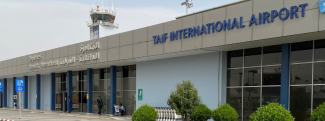In 2017, the Kingdom of Saudi Arabia (KSA) launched a public-private partnership (PPP) to develop a new airport in the city of Taif. The project scope included design, finance, construction, maintenance and operation of the new airport. As with the concession for Madinah Airport, the concessionaire was required to operate and maintain the existing airport until completion of the new airport.
KSA envisioned this Taif airport as a new entry point for religious visitors travelling to Mecca and Medina. The airport was intended to serve international pilgrims for both the Hajj and Umrah pilgrimages, in addition to domestic tourists, and to promote Taif as a tourist destination and ease the capacity constraints on Jeddah Airport.
Six prospective bidders submitted applications to qualify for the Request- for-Proposal (RFP) stage. These bidders were a mix of leading airport operators, financial institutions and EPC companies of various nationalities, both Saudi and foreign. One of the bidders (Dallah Trans Arabia) engaged ALG to provide technical advisory services for its PPP bid.

Objectives, goals and purposes
The objective of the project was to assist Dallah Trans Arabia (the Consortium) with the technical due diligence needed to present a competitive bid, and to help the Consortium during the procurement process until delivery of the bid to the Grantor.
Study methodology and activities
Market research and demand forecasting
This work involved in-depth analysis of the market and preparation of a robust, independent traffic forecast following best practices in the industry, to enable the Consortium to understand the potential for traffic at Taif. This work included:
- Gathering and analysing socioeconomic indicators.
- Gathering and analysing forecasts for the national aviation market.
- Gathering and analysing segmentation of the KSA market.
- Gathering and analysing historical data for Taif’s airport.
- Analysis of airline schedules, demand and capacity for Taif and the complex Mecca multi-airport system, including Jeddah (JED) and Medina (MED) airports.
- Analysis of the development of airport capacity in the Mecca multi-airport system to understand potential traffic overspill and dynamics once/if capacity constraints are hit.
- Analysis of other multi-airport systems around the world to understand and propose feasible strategic positioning for Taif within this competitive landscape.
- Analysis of pilgrim traffic and its drivers and enablers (trends in pilgrimages, VISA issues, capacity development at holy sites) to understand the potential for Taif to capture some of this traffic.
- Robust traffic forecasting using multivariable macro-econometric analysis over the long-term, and a short-term bottom-up approach considering the strategic positioning of Taif in the Mecca multi-airport system.
Infrastructure development and CapEx
This work involved producing an infrastructure development plan considering ALG’s traffic forecast, regulatory requirements (GACAR) and industry standards (ICAO Annex 14), and the forecast capital expenditure (CapEx) plan associated with the infrastructure development plan, including both expansion and major maintenance.
- Forecast of Busy Hour Rates for infrastructure sizing.
- A development plan using a bottom-up approach based on the IATA ADRM and an in-house design team, cross-checked against a top-down approach (airport design capacity ratios) and compliant with all regulatory requirements and industry standards.
- A CapEx forecast fed by the detailed development plan and ALG’s benchmarking of construction and maintenance costs for the region and the Kingdom.
Business plan and operational model
This work involved modelling a business plan via an operational model. This is a comprehensive model encompassing all the information required by ALG for informed decisions (e.g. traffic, development plan, CapEx, revenue, operating expenses, etc.). The business plan mainly involved the following activities:
- Forecasting of aeronautical revenue after a thorough review of the airport charge regulation in the Kingdom applicable to Taif (in terms of charge structure and updates).
- Forecasting of non-aeronautical revenues, considering the past performance of Taif, the potential development of commercial activities in the Kingdom by analysing reference cases and latest trends, and the achievable performance deriving from the traffic segments targeted. This forecast was crosschecked against ALG’s benchmarking samples from relevant cases, the region and the Kingdom.
- Forecasting of operating expenses (OpEx), considering the current cost structure, performance and limitations, and potential improvements to the existing cost structure by an expert private operator. This forecast was crosschecked against ALG’s benchmarking samples from relevant cases, the region and the Kingdom.
Concession due diligence (assistance during procurement)
This work involved assistance to the Consortium during the procurement process until successful delivery of the bid to the Grantor, including adoption of the Terms of Requirements (ToR) for the concession into the business plan and the proposed modification to the ToR.
Success and outcomes
- Successful delivery of robust technical due diligence to the Consortium:
● Clear market positioning for Taif airport within the competitive Mecca multi-airport system.
● Delivery of three traffic scenarios, driving the development plan, CapEx forecast and business plan.
● A comprehensive proposal for airport charges, aligned with public-sector expectations.
● Identification of commercial opportunities for the bidder and levers for improvement for existing commercial units.
● Streamlined operating costs benefitting from economies of scale, with cost efficiencies increasing along with passenger numbers.
● EBITDA growth that reflects the development path of traffic during the concession period, with sustainable operating margins (average 50%). - An IRR for the project of 6%-15%, depending on key assumptions on airport charges and CapEx. Providing best-in-class service levels at the new airport will cut 3 percentage points from the IRR, but will support Taif’s value proposition as an airport of choice in the Mecca region.
- Creation of a comprehensive bid proposal meeting all the requirements in the ToR.
- Successful delivery of the bid to the Grantor, although the Grantor awarded the work to another bidder. The procurement process stopped after the appointment of the successful bidde.

